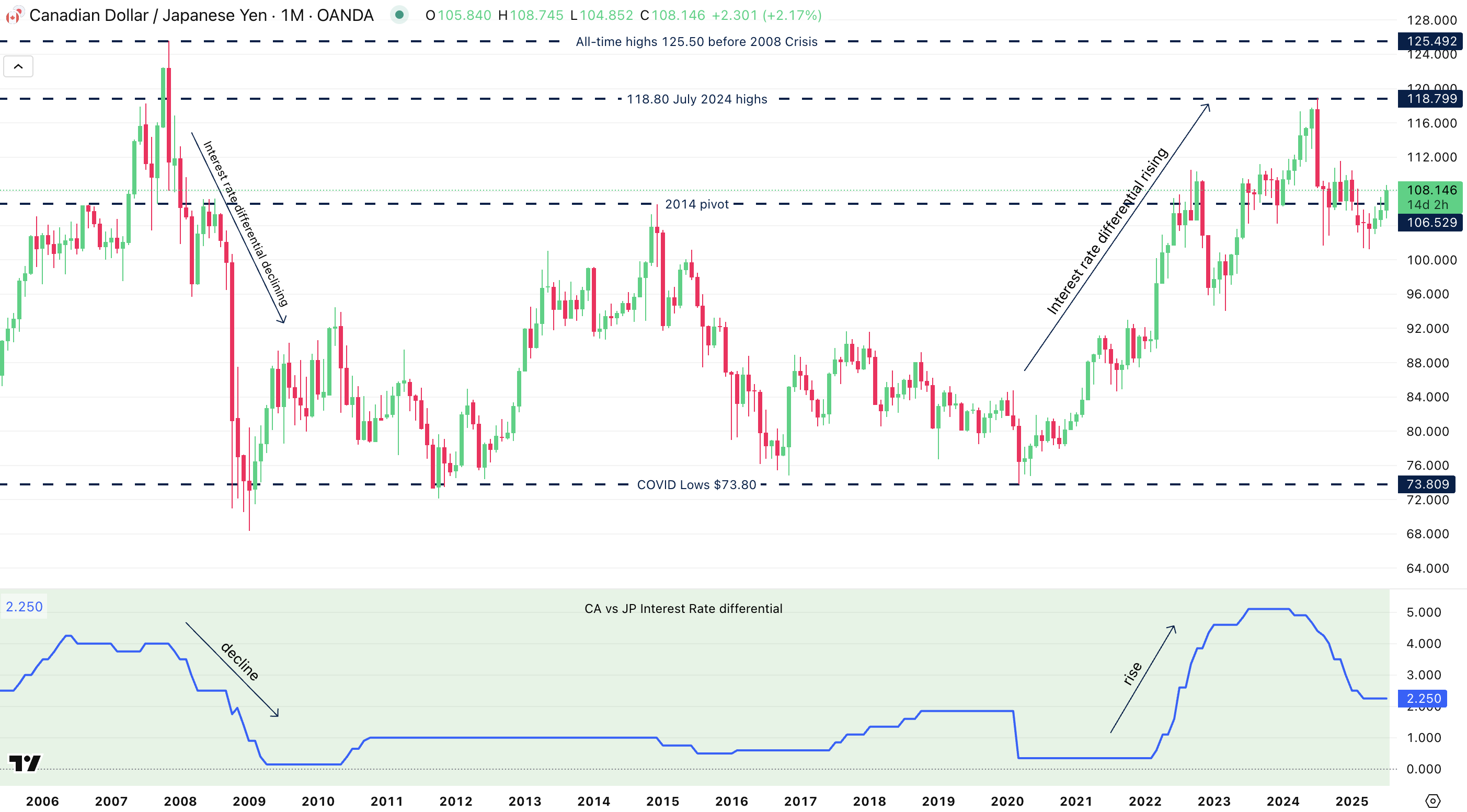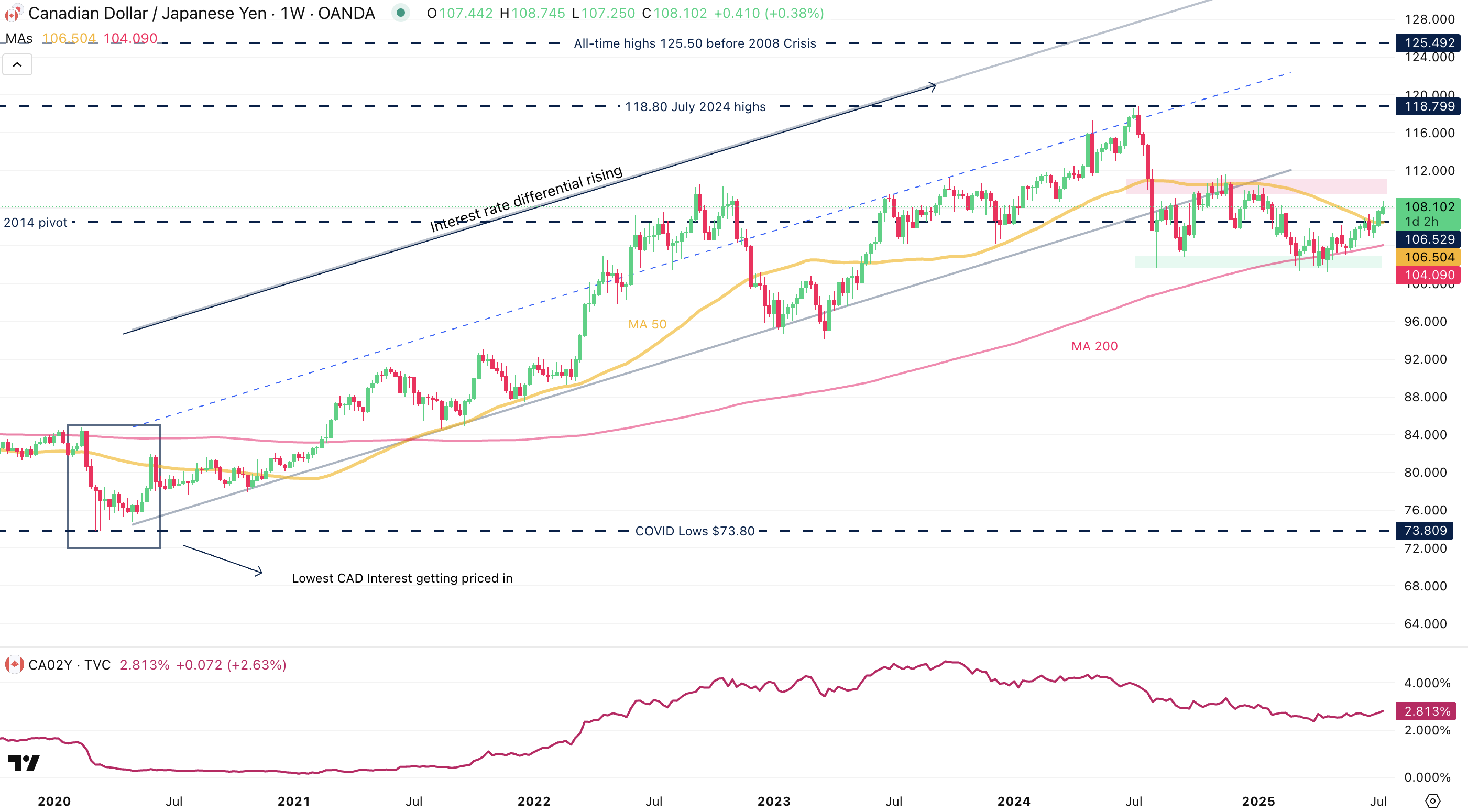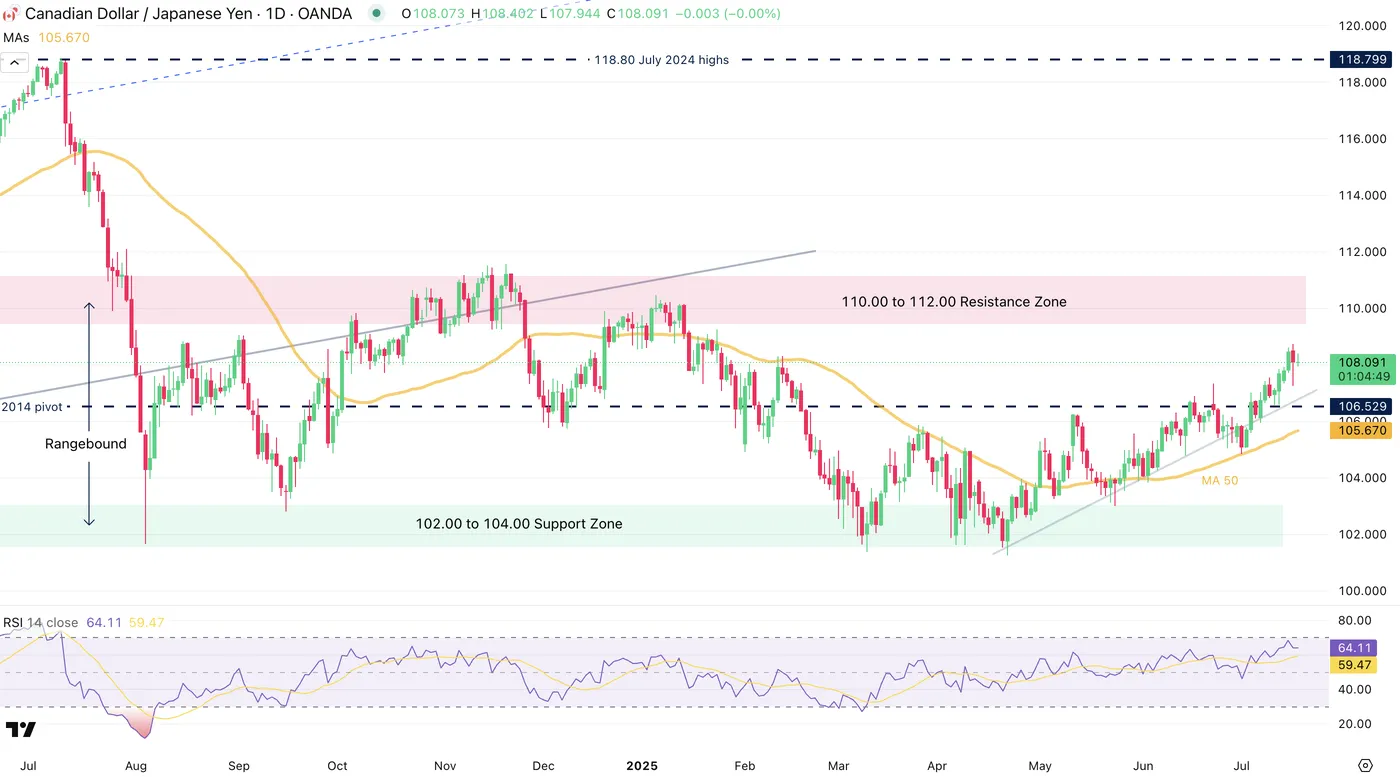Traders are constantly seeking the next opportunity to elevate their results. A common challenge, however, is that many focus on the same popular products and patterns. So, how can one differentiate their approach?
One effective way is to explore less commonly traded Forex currency pairs.
While some might be concerned about liquidity issues with certain financial products, the Forex market is globally the most liquid.
Even the least traded major forex pairs offer ample liquidity and unique opportunities.
In the example, let’s take a look at to spot ongoing trends and why this pair is interesting to trade.
CAD/JPY is a volatile minor pair that tends to move with different factors, including macroeconomic trends (generally, an appetite for risk means the pair goes higher, risk-off means the pair trades lower) and interest rate differentials—this factor has moved JPY pairs quite a lot in the past few years.
If you want to make these pairs your specialty, keep a close look at communications from both the Bank of Canada and Bank of Japan and track their own economic and inflation reports, which usually precede Central Bank rate decisions.
As a reminder, higher inflation (or inflation outlooks) tends to precede hawkish talks by Central Bank speakers, which then precede interest rate hikes.
The higher the interest rate of a currency, the more demand there is for it (as a rule of thumb, may vary) – One of the reasons why the , which has maintained low rates throughout the past 20 years, has seen substantial depreciation.
About this, let’s take a look at the Monthly charts.
CAD/JPY Technical Analysis starting from Higher Timeframes
CAD/JPY Monthly Chart
Source: TradingView
The pair has seen some major trends in the past 20 years, starting from a huge descent in 2008 as global Interest Rates began a significant cutting cycle to stimulate the economy post the Great Financial Crisis.
The already ultra-loose Japanese gave the yen some relative strength.
On the other hand, when Central started to hike again post-COVID, the pair jumped from 73.80 to highs of 118.80, and the top was found in the pair when the 2024 cut cycle from the Bank of Canada began.
Take a look at the interest rate differentials and the price movements of the pair on the chart.
CAD/JPY Weekly Chart
Source: TradingView
You can spot on the weekly chart how the expected bottom of in Canada has coincided with a bottom in CAD/JPY (followed by an actual rise in rates), and the pair hadn’t found a top until the (attached below the CAD/JPY Chart) started to retract.
The Weekly chart also allows us to spot how rangebound the past year has been in the pair – the range extends from 104.00 Lows to 112.00 Highs.
A weekly bearish cross (Weekly MA 50 crossing the MA 200 from higher to lower) typically announces more selling momentum. However, these trends may take time to happen and may not materialize at all.
Markets are awaiting for any extra hawkishness from the Bank of Japan as Japanese has been turning higher without much doing from the BoJ, hurting the yen and advantaging the in the past few weeks.
CAD/JPY Daily Chart
Source: TradingView
Now, looking at the daily chart, we see more details on the rangebound action as Canada’s cut cycle had been fully priced in and concluded (leading to the Mid-2024 correction).
Since markets are awaiting a move from the Bank of Japan, this has led to a major range between the 112.00 to 114.00 Resistance Zone to the 102.00 to 104.00 Support Zone.
Since mid-May, however, the Yen has been relatively weak vs other majors, and the CAD has gained back some strength, explaining the ongoing upward trendline, further supported by the 50-Day Moving Average – A key barometer to observe as we approach the high of the range.
Watch for any break below the MA 50 to confirm the range, and any new communication from the respective Central Banks (Particularly the Bank of Japan, tonight will see the release of their Inflation numbers).
Safe Trades!



